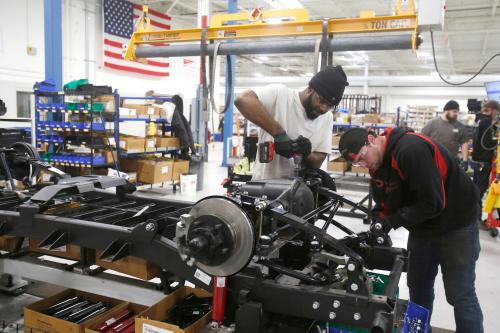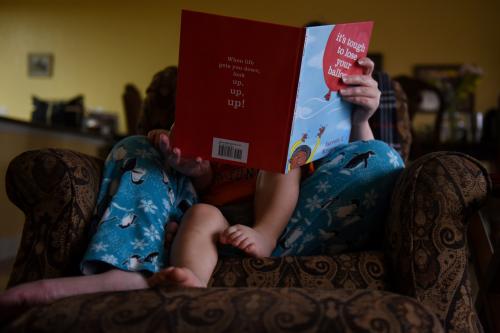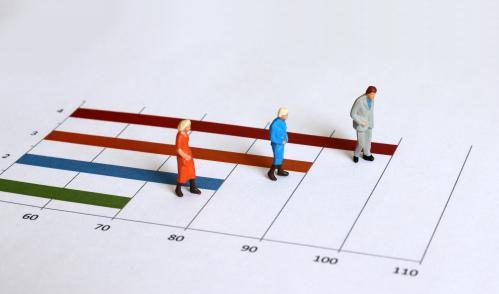If you want more content like this, subscribe to our newsletter.
This week in Class Notes:
-
- A universal family care program for workers with diverse caregiving needs.
- Plus, low-income students in Texas benefit significantly from additional grant aid.
- And, large minimum wage changes reduce employment, but small changes have a positive effect on employment.
- This week’s top chart shows the effect of gradually increasing the minimum wage from $7.25 to $15 by 2025.
- Noah Smith opines on what defines the middle class.
- Finally, check out ideas for helping workers in today’s economy in “How to fix capitalism: Nine expert solutions for America’s broken system“.
Designing universal family care
American families have diverse care needs: child care and education, long-term elder care, and caring for newborns or sick relatives. The demand for family care support among workers has increased, but public policy has not kept pace, according to Veghte et al. The authors analyze these policy challenges and present options for states to provide universal access to early child care and education (ECCE), paid family and medical leave (PFML), and long-term services and supports (LTSS). Their most striking policy option is universal family care, which would provide ECCE, PFML, and LTSS benefits through one integrated program with a joint funding mechanism and a single access point for families. It would be a one-stop shop with straightforward eligibility requirements, rather than a series of bureaucratic applications for different means tested programs, according to the authors.
ProPelled: The effects of grants on graduation, earnings, and welfare
Low-income students who qualify for the maximum Pell Grant are more likely to earn a bachelor’s degree within four years, according to Denning et al. They are also more likely to graduate within five and six years of entry than other low-income students who are not eligible for the maximum grant. These positive effects are larger for students entering college for the first time than for returning students. Thus, receipt of funding at the start of college could shift students to a more successful academic trajectory. Among first-time college students, an increase in grant aid is associated with higher earnings and income taxes in subsequent years. These findings suggest that grant aid pays for itself through financial gains for the public.
Minimum wage analysis using a pre-committed research design: Evidence through 2017
What is the effect of increasing the minimum wage on employment? According to Jeffery Clemens and Michael R. Strain, large minimum wage increases reduce employment, while small increases have a more positive effect. The researchers exploit the variation of minimum wage laws across states to conclude that “labor market frictions create space for small minimum wage changes to improve low-skilled individuals’ earnings opportunities without closing off employment opportunities…By contrast, if large minimum wage changes push the wage floor beyond the value of what many workers are able to produce, then such increases may substantially reduce low-skilled individuals’ employment opportunities.”
Top chart
This week’s top chart shows the effect of gradually increasing the minimum wage to $15 per hour by 2025. The federal minimum wage of $7.25 per hour has not changed since 2009, though many states and localities have increased their minimum wage. The Congressional Budget Office estimates that 17 million workers whose wages would otherwise be below $15 per hour would benefit from the higher federal minimum wage. However, the higher minimum wage would also reduce the number of employed workers; up to 3.7 million who would otherwise be employed would be jobless in an average week.

Choice opinion
“Society can foster a middle-class esprit by providing public goods and services — spaces and institutions that reduce or eliminate invidious status differences. This is a way to justify people’s perceptions of being middle class and cement the idea that we live in a middle-class society. It’s a way to encourage people to connect with their common humanity, and with the broader communities of their cities and their nations. Ultimately, that connection and feeling of commonality might really be what defines the middle class” writes Noah Smith in Bloomberg Opinion.
Self-promotion
Check out ideas for helping workers in today’s economy in “How to fix capitalism: Nine expert solutions for America’s broken system”. Some of the proposed solutions include increasing workers’ wages, a new commuter credit, and high-quality childcare.








Commentary
Class Notes: Universal family care, minimum wage analysis, and more
Wednesday, July 17, 2019